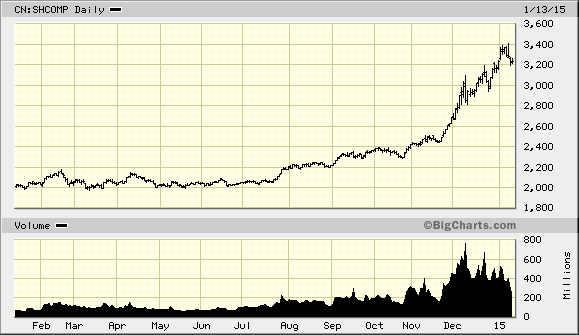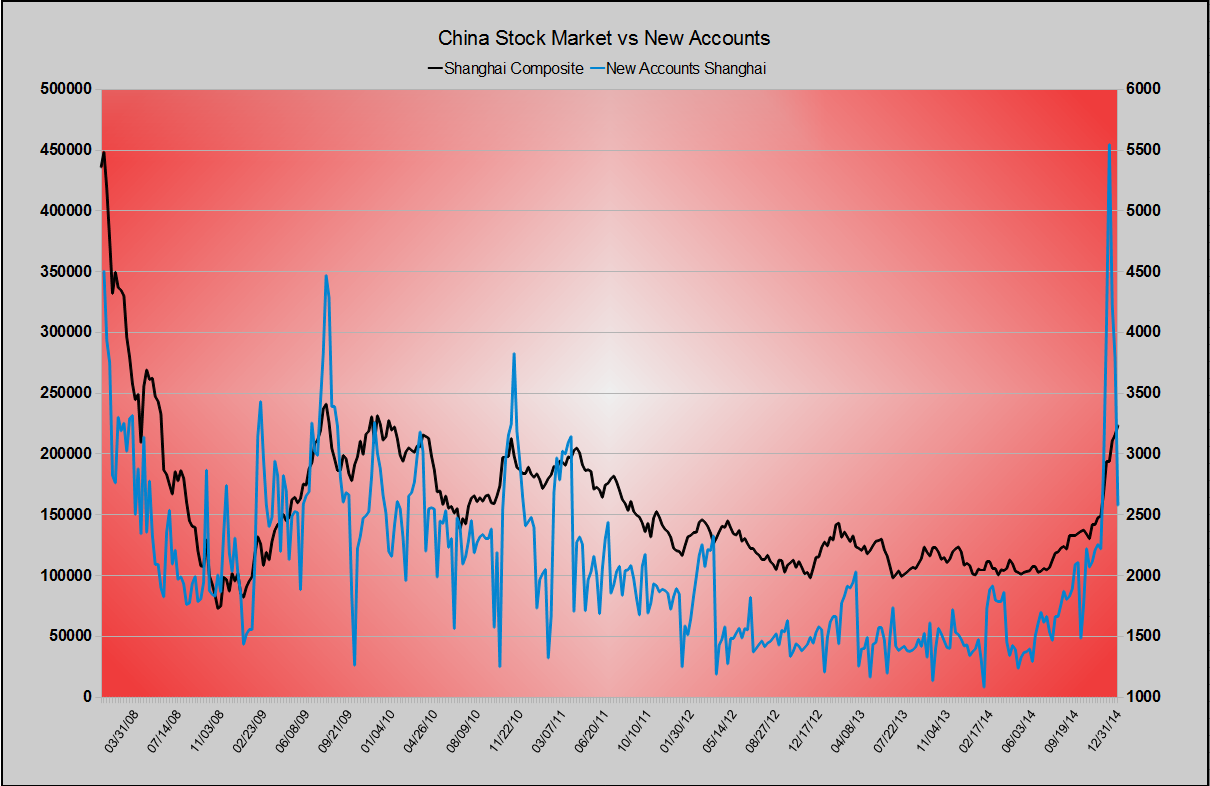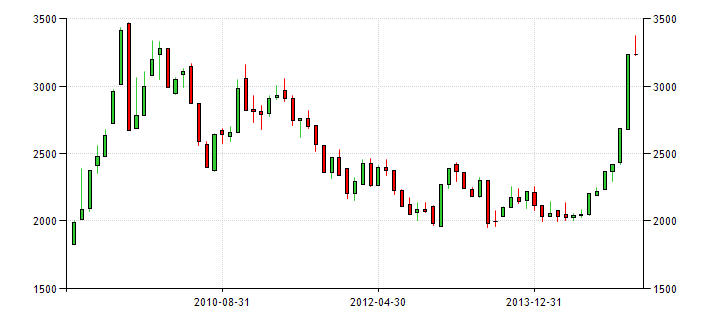
by Chris Becker
It doesn’t get much more frothy in terms of bubbles when you talk about South Asia speculation! The Chinese share market, best represented by the Shanghai Composite is on an absolute tear up 65% in nominal terms in the last year:

Note the massive increase in volumes, which now has a sliding triple top (lower highs), always a sign of turbulence ahead. In fact this slowdown in volume is not matched by a huge surge in new trading accounts, with individuals now comprising some 80% of all trading volume:

And this speculative surge will be embiggened by new rules allowing same-day trading of ETFs:
The bourse plans to introduce rules from Jan. 19 allowing “T+0” trading for cross-border open-ended exchange traded funds, meaning market participants will be able to buy and sell securities and settle the transactions the same day, SSE said today in a statement. China currently operates a T+1 system, which settles a transaction a day later.
And the introduction of stock options. From the FT:
The Shanghai Stock Exchange will launch simulated trading of stock options, China’s securities regulator said on Friday, the latest in a series of steps by regulators in recent weeks to develop the country’s nascent derivatives market.
Simulations will begin with options on the Shanghai 50 exchange traded funds but are expected to expand to individual blue-chip stocks.
More from Bloomberg:
The biggest winners in the current rally are already turning expensive on traditional valuation metrics.Lanzhou LS Heavy Equipment Co. (603169), a machinery maker that started trading at 1.68 yuan on Oct. 8, has since surged more than 12-fold and now has a price-to-earnings ratio of 227, more than 14 times that of the CSI 300.
Aluminum Corp. of China Ltd., whose mainland-traded A shares were priced at 3.88 yuan at the end of September, has gained 57 percent even after the company lost money in the year ended Sept. 30 and analysts predicted further losses in 2015.
“I’m not sure how long this rally will last,” Zhu Lixu, an analyst at Xiangcai Securities Co., said by phone from Shanghai. Some Chinese investors “tend to ignore important fundamentals,” Zhu said.
And if you’ve read Bull: A history of the boom and bust, the chronicle of the 2nd last US stock market bubble, the following anecdotes will make you stand up and press the sell button:
Shawn Gao, a 27-year-old bank manager in Chengdu, looks for shares that will benefit from government policy changes while using volume and momentum data to help guide his decisions. Even he admits, though, that he’s sensitive to the absolute price level, staying away from stocks priced above 20 yuan.
Yuan Shuai, a security guard for Beijing’s subway system, illustrates the challenge for authorities as they try to influence investor psychology. The 26-year-old, who visited a GF Securities Co. (000776) outlet in the Chinese capital’s Xicheng district to open a trading account on Dec. 31, said he only buys shares trading below 10 yuan.
“I feel cheap stocks are less risky — big drops won’t result in huge losses for me,” Yuan said. “I don’t know too much about investing, but the stocks my friends recommended have been soaring in the past few weeks.”
But should we put this huge move into context? Here is the Shanghai Composite performance since the GFC nadir in 2009, where the current level matches the early 2010 top:
The first rule of investing is expect the unexpected. Rallies can go on longer and higher than anyone can “reasonably” imagine, and prices can fall further and faster. Applying extra buying torque with the (final?) entry of dumb money can ratchet up a boom into a bubble.
When it bursts, no one will know. But there are some excellent opportunities here.
